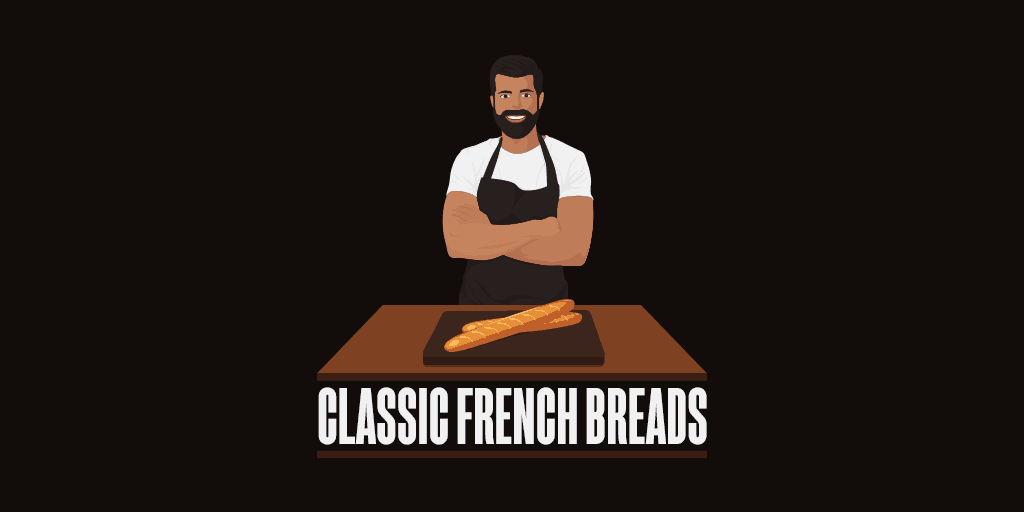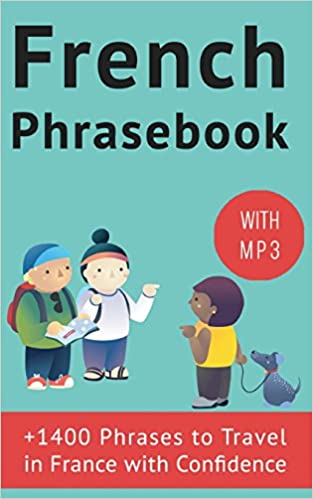Bread is one of the first things that come to mind when you think about typical French food. Most French people eat bread every day and almost at every meal, from breakfast to apéro and dinner. Therefore, you will find bakeries everywhere across the country, including in tiny villages.
Your trip to France would not be complete without trying some delicious French breads from the local boulangerie!

Quick Background on French Bread
Take note that not every single place that sells pain, bread in French, has the title of boulangerie. France takes this national symbol very seriously and, in 1993, set up a law to regulate the sale and fabrication of bread with the Décret Pain (Bread Decree).
In order to receive the title of boulangerie, bakeries must obey a set of rules:
Any place that doesn’t respect these regulations is merely a dépȏt de pain.
Each bakery offers dozens of types of breads of all sizes and shapes to choose from. Some of them are specific to the store you are visiting or the region you are in.
Some bakeries don’t hesitate to add spices, olives, bacon, dried herbs, or cheese for a unique twist. Others are classic choices that can be found in most boulangeries, no matter where you are.
Here are some of the most common ones: you can’t go wrong with any of these French breads we lined up for you! And remember: to find the best boulangerie, look for the longest waiting line outside.
1. Une baguette

Photo by Sergio Arze on Unsplash
La baguette is the best-known French bread. It is about 65 to 70 cm long and weighs 250 grams. If you think it might be too much before it goes stale (usually within 24 hours), ask for a half loaf: une demi-baguette.
You can find it everywhere, from boulangeries to supermarkets.
2. Une baguette tradition

Photo by Filip Mishevski on Unsplash
Slightly more expensive than the regular baguette, the traditional baguette has a darker crust and is fermented longer than the regular baguette.
It can only be made using four ingredients: flour, water, yeast, and some salt, according to the 1993 decree.
3. Une flûte
Depending on the area you are visiting, une flûte is either twice as big (about 400 grams) or twice as small (about 100 grams) than the typical baguette. It can be confusing!
See also:
4. Une ficelle

Photo by Rodolfo Marques on Unsplash
Une ficelle (which translates as a string) is a smaller, skinnier version of the baguette. It is an excellent choice if you like the crust or if you don't want to order a bigger bread.
5. Un pain de campagne

Photo by Florencia Viadana on Unsplash
The baguette did not become the typical French bread until the 1920s. Before that time, bread was shaped in a large, almost round loaf instead of the skinnier baguette you are familiar with. Therefore, it stayed fresh longer.
You can still buy that type of bread nowadays under the name of "country bread." Most boulangeries will slice it for you if you ask.
You can sometimes find it under a different name: un pain boule (a ball bread), which, incidentally, the word boulangerie comes from. It is sometimes made with natural leavening instead of commercial yeast, which gives it a taste similar to American sourdough bread.
6. Un pain de mie

Photo by Jerome Heuze on Unsplash
Not a fan of the thick, crispy crust French bread is known for? You can ask for a pain de mie, which is similar to the sandwich bread you can find across the United States.
In France, it is usually only used to make toast or sandwiches. It is often sold sliced.
7. Un pain aux céréales

Photo by Ales Krivec on Unsplash
A cereal bread uses different types of flour besides the usual wheat. Each boulangerie has its own recipe, but it is often made using a blend of corn, barley, rye, oat, millet, and so on.
Some bakeries also add seeds like sunflower, sesame, poppy, flax, etc.
8. Un pain complet
Wholemeal bread has the reputation of being healthier than regular, refined flour bread. It is often denser and darker than other types of bread.
9. Un pain de seigle

Photo by Patryk Pastewski on Unsplash
Rye bread is typically served with oysters. It is darker than regular bread and is made of rye and wheat flour.
10. Une fougasse

Photo by Miti on Unsplash
Originally from Provence, fougasses can now be found everywhere in France. It is not unlike Italian focaccia, with a thinner, lighter crust than French bread, and it is flatter than regular bread.
Many boulangeries shape it in beautiful, flower-like forms and add different ingredients to the dough like olive oil, olives, sun-dried tomatoes, etc.
Hope this article helped you the different version of bread in French and their names. What is your favorite French bread? Let us know in the comments!




Thank you, very interesting and informative.